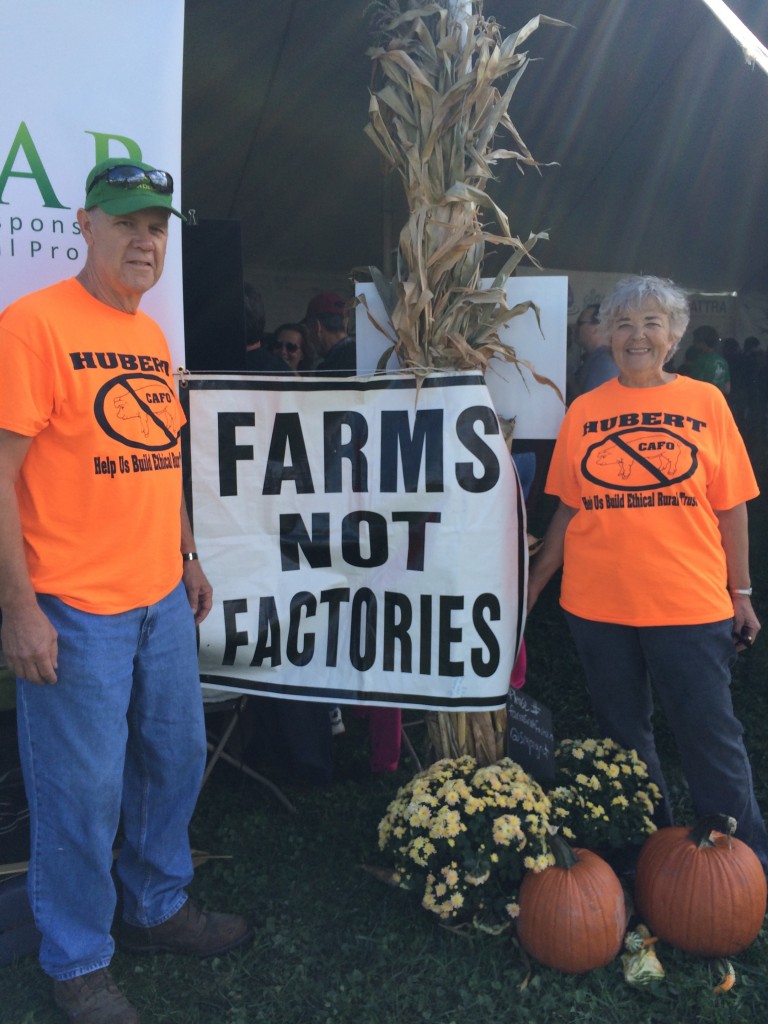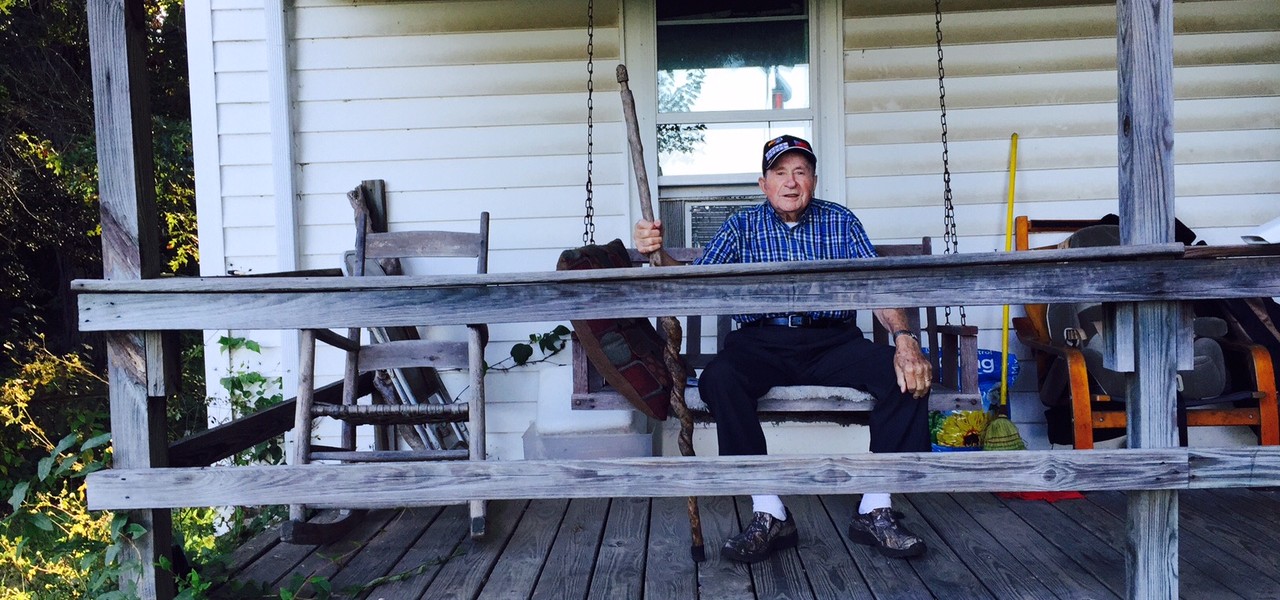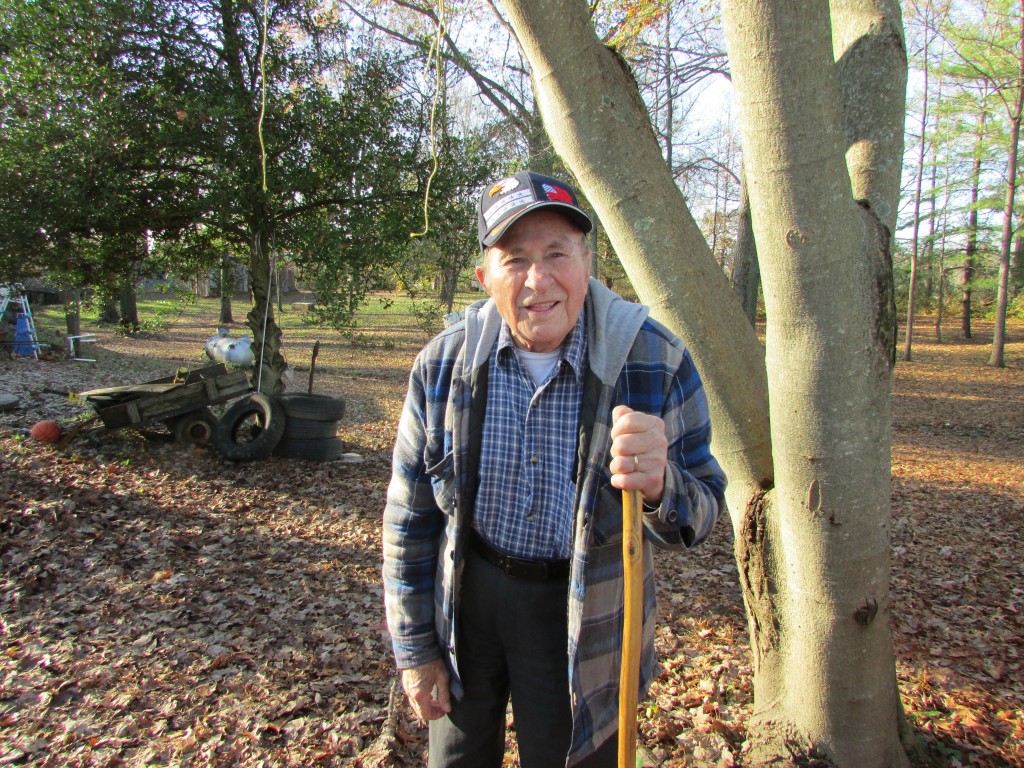Guest blogger, Kendra Kimbirauskas, is the Chief Executive Officer for the Socially Responsible Agricultural Project
Health and safety of 94 year-old WWII vet threatened by massive Indiana hog operation
At the end of a dusty Indiana lane, set back in woods, is a little white home. On the porch swing next to the front door is where World War II veteran, Hubert Brumett, slowly rocks forward and back while enjoying the fresh air and the sounds of a world he has known his whole life.
Not a lot has changed about the house over the years. But beyond the front porch, the times and the landscape are shifting quickly — and in ways Hubert never would have dreamed.
 Hubert was just a boy in 1939 when he left his family’s Indiana farm and enlisted in the U.S. Army.
Hubert was just a boy in 1939 when he left his family’s Indiana farm and enlisted in the U.S. Army.
“We used to call ourselves men,” he says with a smile. “But we were all nothing more than just kids.”
During his time in the military, Hubert found himself far from the Indiana countryside, stationed in New Guinea, The Philippines and Okinawa. His job was to guard B-24 bombers from enemy sniper fire.
He credits his surviving the war to the fact that he was injured in a jeep accident. It took him out of action for four months. When Hubert returned to his unit, he didn’t recognize some of the faces — and familiar ones were missing. That’s when he found out many of the boys he was stationed with had been killed.
“If I would have been with them, I’d have been killed, too,” he says.
After the war, Hubert was discharged and he returned to the Jackson County, Indiana, farm that his father bought. Hubert built a house there in 1957, and it has been his home ever since. Even at 94, he still lives there independently. And after a lifetime of farming, working and raising a family, Hubert looked forward to living quietly in his little piece of paradise.
That all changed last year.
Hubert’s world came under fire when he learned that a local hog company proposed construction of an industrial-scale concentrated animal feeding operation, or CAFO, that would house some 4,000 hogs and produce more than 1 million gallons of manure just 557 feet from his front door.
No stranger to farming, Hubert couldn’t understand why a hog operation of this scale could be built virtually on top of his house. It didn’t make sense. Aren’t there rules that require a facility that size to be a certain distance from the nearest neighbor, he wondered?
The disappointing answer was no.
He fought for his country. He worked hard. He raised his children. Give him the dignity to live on his own land the way he wants to live.
“I’ve never seen anything like it,” says Hubert. “You’d think they’d have some rules — some limits on where they could build theses hog barns. But there aren’t any rules and they don’t care.”
Right now, Indiana law allows for a new CAFO to be sited within 400 feet of a neighboring residence. In Jackson County, a variance allows for new livestock operations to site just 300 feet from a neighboring home. Including Hubert’s, 485 homes are located within a 3-mile radius of the proposed Jackson County hog operation.
The CAFO operator has no plans of living anywhere near the facility, opting to live in town several miles away from the operation. And it’s no mystery why.
Industrial hog CAFOs confine thousands of animals inside cramped, artificially lit and mechanically ventilated buildings. Massive amounts of manure are collected in giant pits, untreated and decomposing. And while there, it releases over 160 gases toxic to people and animals. Gases like hydrogen sulfide, ammonia, carbon monoxide, carbon dioxide and methane rise from the pit to create a toxic atmosphere. So dangerous, in fact, that gigantic fans are installed to blow the gases out of the barns and into the surrounding area.
The fear? If the fans fail, the hogs will die.
But hogs are not the only ones to suffer potential injury from the fumes.
Hubert lives with Chronic Obstructive Pulmonary Disease. COPD is a disease that makes it difficult to breath and it requires Hubert to use an oxygen tank. His doctor recently wrote a letter offering up her opinion that the particulate matter and gases from the planned hog operation would be debilitating to Hubert’s health. Hubert’s family fears that if the hog operation is built, they will have no other choice but to move him to a nursing home.

“It just breaks my heart to see this,” says Hubert’s daughter-in-law, Brenda Brumett. “He fought for his country. He worked hard. He raised his children. Give him the dignity to live on his own land the way he wants to live.”
Showing no sign of giving up his home and his independence, the Army veteran says there’s only one thing to do.
“All we can do is fight it.”
Hubert’s neighbors — over 100 families who many are farmers themselves — banded together to support Hubert and challenge building of the proposed industrial livestock operation. They have formed a group called Help Us Build Ethical Rural Trust, or HUBERT.
For more information about Hubert or to help him in his fight, please visit his Go Fund Me page.



